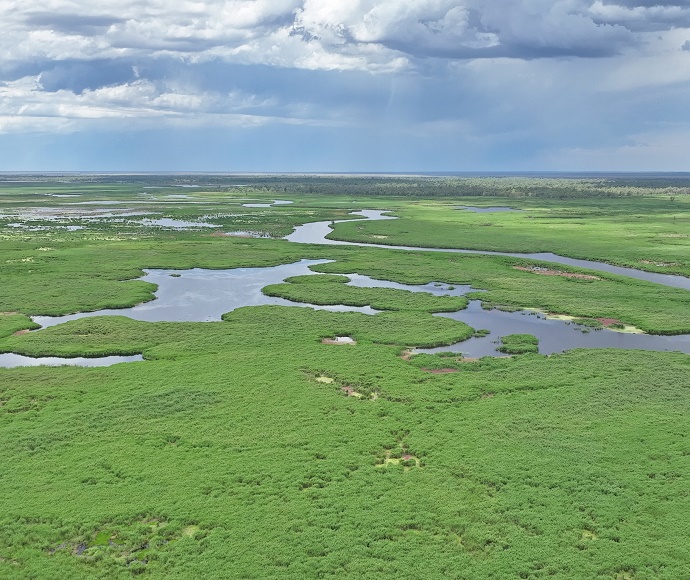For half a century the southern bell frog had not been detected in the Great Cumbung Swamp in far southwestern NSW.

But potentially record-breaking inundation since 2020 has resulted in a dramatic recovery for the wetland complex, with the first official record of the southern bell frog in 50 years and the first records of the endangered Australasian bittern in 20 years.
Prior to three consecutive La Nina wet years the condition of the Great Cumbung Swamp had declined but the future for the Swamp is now looking bright.
A new project is underway that for the first time brings together First Nations people, private landholders, environmental water managers and scientists to work out the best way to restore the ecological and cultural values of the wetland.
The project – being funded by the Commonwealth Environmental Water Holder and delivered by NSW Department of Planning and Environment (the department) – will see the development of the Greater Cumbung Region Water Management Plan. The plan will determine the environmental water requirements of these unique wetlands and then set out actions and strategies for how those needs can be met.
'Protecting the Great Cumbung Swamp for future generations is our goal," said the department's senior environmental water manager Dr Joanne Lenehan.
'The Swamp is one of only two sites in the Murray-Darling Basin – the other being the Macquarie Marshes – that supports extensive beds of common reed. These large reedy wetland environments provide critical functions as habitat for animals with specialised breeding requirements, such as the Australasian bitterns and southern bell frogs, as well as carbon sequestration and water purification.
'The greater swamp complex also supports one of the largest river red gum woodlands in NSW, with more than 50,000 hectares of red river gum located in the area.'
Commonwealth Environmental Water Holder Dr Simon Banks said the project is about a shared vision to benefit the whole Cumbung system.
'Protecting and restoring the natural environment involves collaboration and engagement from all sectors.
'Environmental water managers are working with local landholders, First Nations people and scientists to help protect nationally important wetlands such as the Great Cumbung Swamp,' Dr Banks said.
Fergus McLachlan of Tupra Station at Oxley, one of the properties involved, said the collaboration offered great opportunities to help protect and preserve the wetlands.
'Ideally, the outcome will be a plan that is flexible enough to meet the long-term objectives of stakeholders,' Mr McLachlan said.
'We know there won't always be enough water to do everything we would like, but by working as a team, we can protect what it is possible to protect.
'I think it's an important opportunity because I don't want to be apologising to my children for not doing what I can to protect their heritage.'
The first major milestone report, a review of the literature and data gap analysis, has been completed and the department have begun work on determining the environmental watering requirements for priority species, such as the Australasian bittern and bell frog.
Protecting the Great Cumbung Swamp
- The Great Cumbung Swamp is listed in the Directory of Important Wetlands of Australia.
- It includes areas of deep, open water lakes and shallow marsh mudflats, and covers 15,000 - 20,000 hectares when flooded.
- Over 131 bird species and 207 plant species have been recorded here.
- Water flows to the Swamp via the Lachlan River.
- The plan includes:
- setting 1, 5 and 10 year environmental watering priorities, objectives and targets
- monitoring, evaluation and research plan
- auditing existing water management infrastructure
- identifying constraints to natural flow regimes
- prioritising future works to improve the use of environmental water
- Australasian bitterns have declined dramatically with the Australian population estimated in 2021 at 1300 individuals.






